Bigfoot Networks Killer 2100 Gaming Network Card Review
Killer 2100 Real World Testing
For the bulk real world testing I used Speedtest.net connecting to various servers around the globe from rural western Maine. The closest server was Portland at ~90mi, and the farthest was Melbourne Australia which showed up as 10,550mi. For this test I switched back and forth from high to normal application priority for Firefox, restarting the browser after 4 runs on each setting or NIC, on each server. Speedtest was run with no system load.
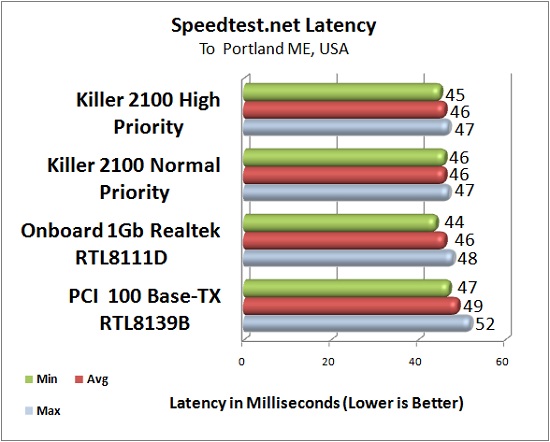
In the shortest latency test, the PCI card was the only NIC that deviated from the 46ms norm, and the application priority had no effect.
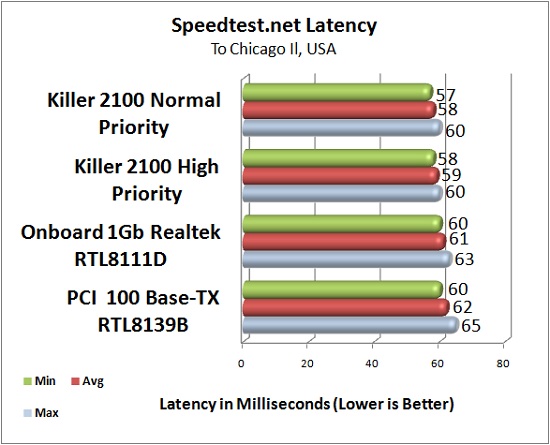
Chicago is one of the most common North American game server locations due to its centrality for all American players leading to more populated servers (No one wants to play at 130ms ping when they can play at 60ms). Here the lower priority was slightly faster, and the Killer 2100 was faster than the onboard and PCI NICs.
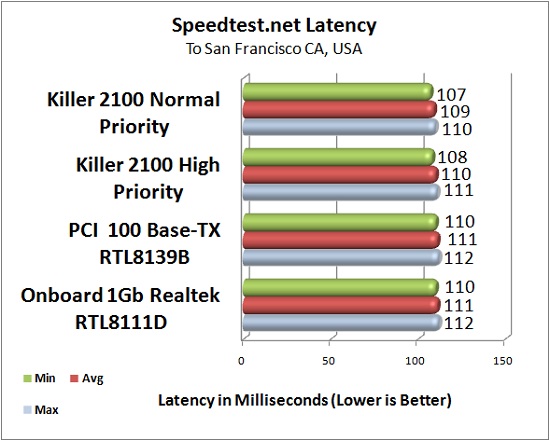
The California server latency followed the same pattern as Chicago, with averages staying within 3ms across the board. Again, application priority was counteractive.
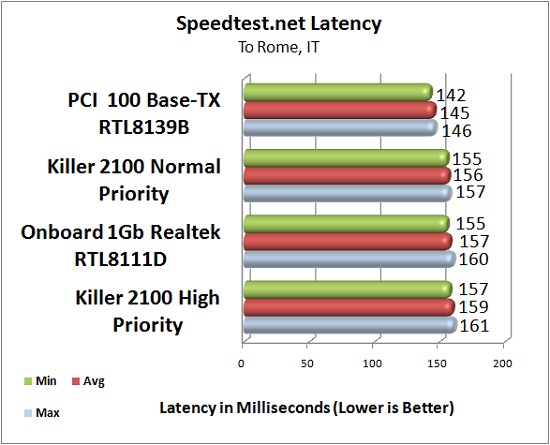
The test to Rome saw some interesting results, with the PCI card consistently quicker at 7% faster than the Killer 2100 at normal priority, and the onboard NIC was actually faster than the Killer 2100 in high priority.
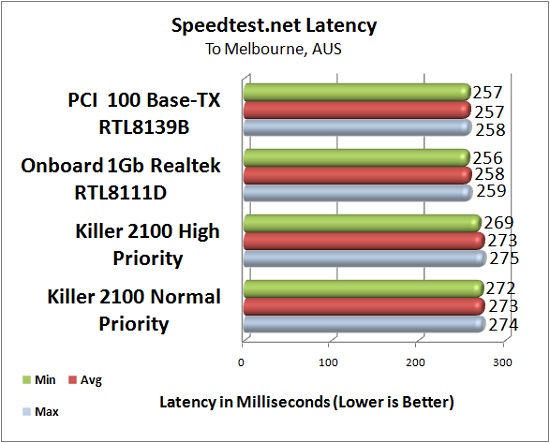
The farthest server I could find was in Australia where each NIC was fairly close again in latency, with the Killer 2100 actually the slowest by almost 6% at both priorities. Clearly, application priority is far from an exact science and hopefully one day it will be as effective as I expected it to be.
Actual Online Gameplay
Gameplay latency is not a very easy thing to chart or even compare, but what I did was set each game to maximum graphical settings and just watched the ping fluctuate. For the first testing I was using my 1055T setup at 3.4GHz mentioned previously.
Battlefield Bad Company 2: The server I connected to provided a 202 ping with the onboard NIC, and the Killer 2100 brought it down a staggering 2ms to 200 for a ping. In BFBC2, the latency was very consistent when I was out in the open with the only change coming when I entered a Tank.
Team Fortress 2: TF2 is based on the source engine, and polls latency very frequently compared to BFBC2 so it is hard to get a good read on your latency since every rocket or grenade causes large fluctuations in framerate and pings. The difference between NICs was slightly larger at between 1-2% from onboard to the Killer 2100. Still, this is certainly not a difference that would justify upgrading from onboard, though.
Killing Floor: KF is not a very demanding game and yet again, there is no difference at all between NIC’s.
The Killer 2100 primarily offloads NPU usage from the CPU so that more stress on the system would not affect latency, so figuring my system had too much processing power for that to be relevant, I used the ‘server’ PC which has 2GB single channel memory and a 2.5GHz Core2 Duo for gaming to see if the lack of cores and much lower frequency would affect the NPU duties of the CPU for the onboard NIC.
The difference between NICs grew slightly, but still didn’t even break 6% improvement over onboard in BFBC2 which is a heavily threaded title where every core and MHz on the CPU clock can mean massive framerate gains. The Killer 2100 simply does not provide enough of an improvement to warrant upgrading from onboard Ethernet unless you do not have 1 Gigabit onboard.

Comments are closed.